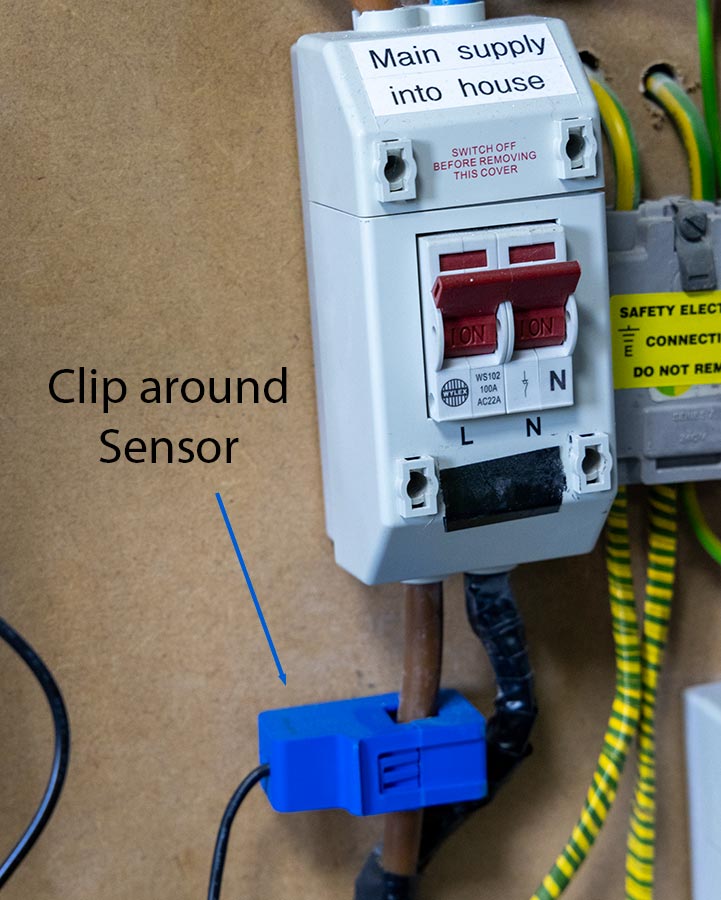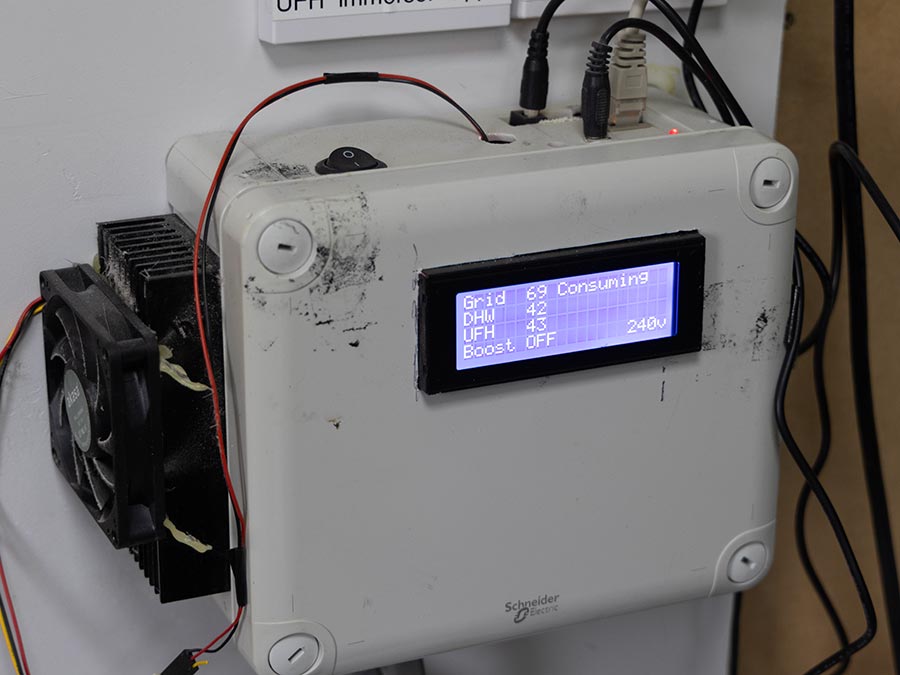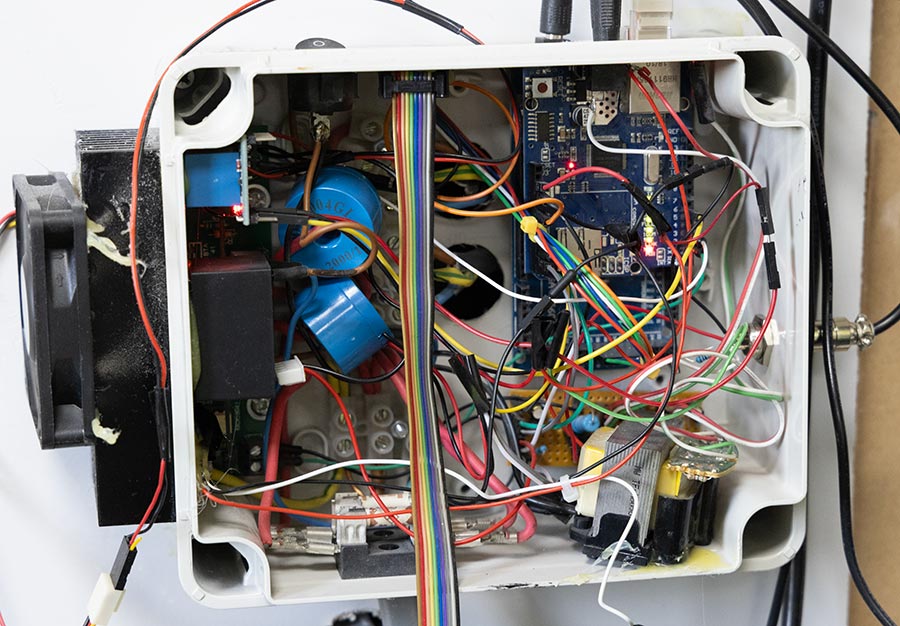Energy Diversion (often called PV diversion)
What Does an Energy Diverter Do?
"At its simplest, an energy diverter captures excess energy from your private generation system, whether it is photovoltaic, wind or hydro, and uses it locally instead of allowing it to be exported to the grid. The most popular use is for water heating, though there are also examples of use for space heating and battery charging."
Quote from Open Energy Monitor org - please read more on this excellent site....
Let's make something very clear:
Luckily there are many generous people out there publishing their innovative work on the internet. Without such people the world would be a lesser place and I can take no credit for what I've done in my Home Energy Management. If it weren't for the likes of openenergymonitor.org and Robin Emley of mk2pvrouter.co.uk I would never have considered this path. Thank you.
For more on Energy diversion, please see here
Options to make it happen:
There are several off-the-shelf devices readily available, marketed by all the popular solar providers (costing several to many £100s !). And some made and sold by the characters I've already mentioned and thanked. I chose to make my own, commercially available diverters are quite new and weren't around when we started our new self-build self build. Mine cost about £30, is dual channel (7.5kW) and has been working for many years.
Requirements:
No matter what system you invest in it will come with a sensor that has to be attached to the incoming power to the house, as in picture. This means the diverter must be physically close to that point, long cable runs on these sensors are not recommended.
Additionally, you must have something to divert your excess energy into. 'Reactive' electrical items are unsuitable; you couldn't, for example, run an Air-source Heat Pump from diverted energy. The safest 'dump' is any type of electrical heater - even a room heater. We dump our excess power into...
- Domestic hot water tank (3kW immersion)
- Underfloor heating buffer tank (3kW immersion) (we have a very large buffer tank)
- Converted oven (for baking bread etc)
- Or, it is given to the grid, without payment, for someone else to use


